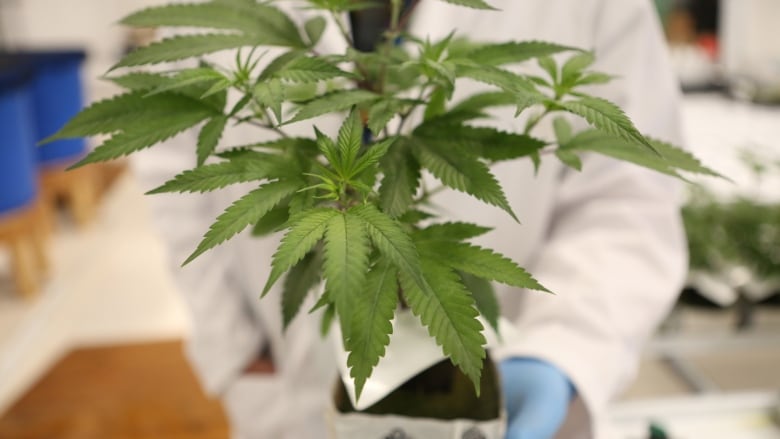Take a tour of Hamilton's first legal marijuana production plant
Green Relief Inc. operates a high-tech, high security bunker in rural Flamborough

You'd never know it standing at the side of the road, but nestled in the rolling hills of Flamborough is an underground bunker capable of producing more than 2,700 kilograms of medical marijuana per year.
At the end of February, Green Relief Inc. became Canada's 28th licensed producer of dried marijuana under the Marijuana for Medical Purposes Regulations (MMPR). The company says it's also the largest aquaponics commercial grow facility in North America.
Just off a main concession, a bumpy dirt road winds past a weathered barn and crosses over a babbling brook. The view might lead one to expect to find an historic farmhouse or field of crops as they crest the final hill up the laneway.
Instead, it's heating, ventilation and air conditioning systems poking out from the soil, surrounded by barbed-wire fences.
Security like 'Fort Knox'
The 30,000 sq/ft facility is monitored by about 90 high-resolution video cameras set up to watch everything that moves.
Warren Bravo, the CEO and co-founder of the business, said Health Canada regulations require security around the facility to be extremely tight. Security video, taking up hundreds of terabytes, must be held for at least two years, he said.
"There's no time on site you aren't being surveilled," he said. "We have a downtown bank-quality, embassy-quality security system on site."
Marijuana grown at the facility will be dried and then stored inside a large vault, built to meet level 9 security code specifications and accessible only to a select number of individuals.
Robert Pasuta, Ward 14 councillor, said he has toured the facility, located in his ward, five times and has no concerns.
"It's just like Fort Knox," Pasuta says.

How it works: fish and vegetables
The marijuana will be grown inside four highly-controlled rooms within the facility using a method called aquaponics: a combination of aquaculture and hydroponics.
Aquaponics is the cultivation of fish and plants together in a sustainable ecosystem that converts waste products from fish to plant nutrients.
Each grow room has rows of plants set above moving water, connected by pipes to a series of vats at one end of the room. Large blue containers house fish and are connected to a system that converts fish waste to plant nutrients. Warren said nutrients like phosphorus, nitrogen and potassium, derived from fish waste, are absorbed by the plants.
Eventually the clean water is filtered back into the fish tanks, completing a sustainable loop.

The facility received 200 clones of marijuana plants in early March and the plants are currently around 30 cm in size. Once the operation is fully established, it will grow 6,000 cannabis plants and house 8,000 fish.
Because the company has only recently obtained a license to produce marijuana, up until now Green Relief has been growing vegetables. The kale, Swiss chard, basil and other veggies grown at the facility helped the operation test and control the massive aquaponic system.
The vegetables produced and the fully-grown tilapia have been donated to Second Harvest, a Toronto-based food rescue program.
New regulations from Health Canada allowing commercial industries to produce and distribute marijuana for medical purposes came into effect in June 2013.
To date, only 30 licenses have been handed out to producers. Green Relief is licensed to produce, but not yet authorized to sell. They'll be seeking this authorization over the next few months.
Because the facility is half underground, the temperature is much easier to control.
The total cost of the building, including security systems and grow rooms reached around $12 million, Warren said.
How to get it

In the coming year, Green Relief plans to expand, creating a 210,000 sq/ft building with a research facility and laboratory. Warren said the new space will allow the company to produce 90,000 pounds of marijuana per yet. The expansion is expected to cost around $45 million.
More research needs to be done on the health benefits of marijuana, he said. The new facility will allow scientists to study the plant and also further develop the field of aquaponics as a viable form of agriculture.
Warren said the eventual sale of marijuana will fund the research he hopes to do.
Warren said marijuana will not be sold at the Flamborough facility.
It will be only accessible to people with a medical prescription. Once Green Relief can verify a prescription as valid, the cannabis will be shipped directly to the patient.